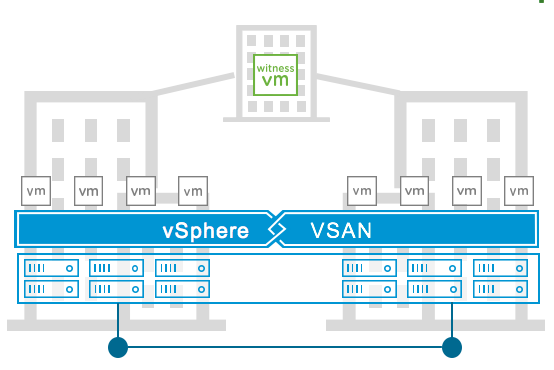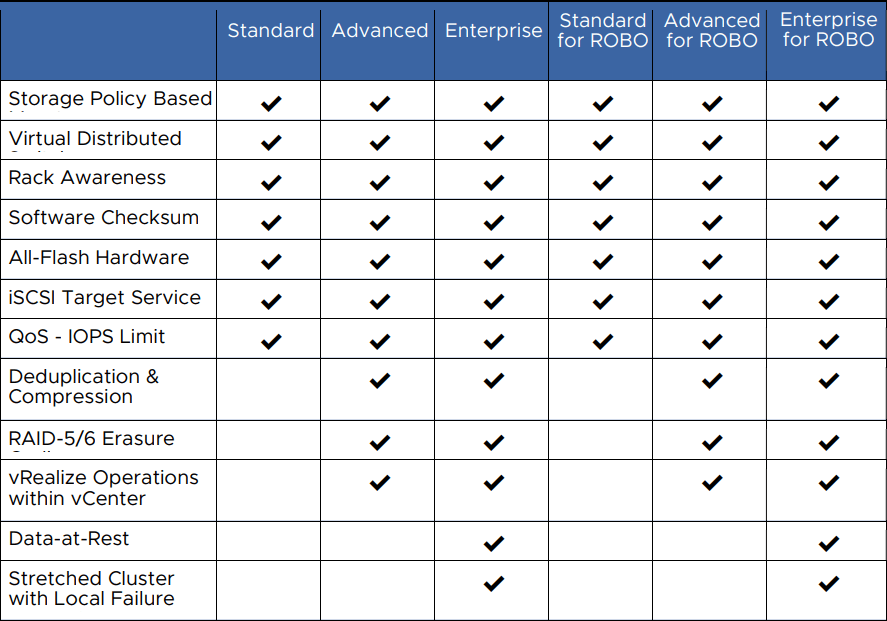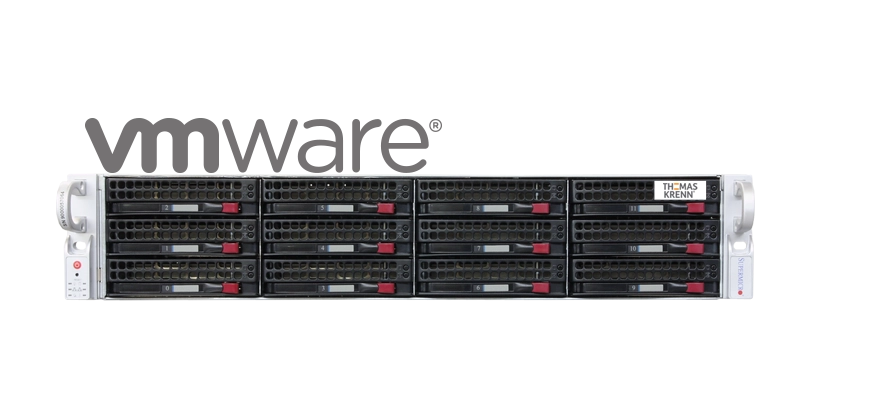VMware vSAN is a storage virtualization software for enterprises that supports hyper-converged architecture (HCI). VMware vSAN aggregates local and direct-attached data storage devices across a VMware vSphere cluster to create a single data store accessible to all vSAN cluster hosts.VMware vSAN is included in the VMware ESXi hypervisor.
VMware vSAN creates a distributed, shared data store by pooling direct-attached storage devices across a VMware vSphere cluster. Additionally, organisations utilise the technology to manage computing and storage on a single platform. Organizations may minimise the cost and complexity of traditional storage systems by employing policies and rules in vSAN to control storage.
vSphere, VMware’s virtualization cloud computing solution, allows users to establish the storage needs for virtual machines (VMs) on a vSAN cluster; vSAN ensures that these rules are governed and maintained. When a need or policy has to be changed, companies may use the vSphere Client to deploy these policies and rules, which manage both cluster administration and storage policies.

VMware vSAN works with the VMware ESXi hypervisor and can run on industry-standard x86 servers from Dell EMC, HPE, Fujitsu, and Lenovo, among others.
Using a two-tier vSAN architecture, VMware vSAN also enables hybrid and all-flash deployments. Both designs make use of a cache and a capacity layer.
Key VMware vSAN features and benefits
Although the feature set changes based on the licencing type, VMware vSAN provides the following capabilities and benefits:
- Storage policy-based administration This function allows for the automatic management of storage profiles.
- Data at rest encryption and checksums prohibit unwanted access to data at rest. The vSAN data storage is encrypted as well. These data stores can use storage from all ESXi hosts in a cluster and can access all VM files.
- Clusters that are stretched Clusters improve security and availability by letting many virtualized host servers work together in the same way.
- all-flash configuration services. For all-flash installations, Advanced and Enterprise licences offer data deduplication, compression, and erasure coding.
- All vSAN licences support storage quality of service (QoS), which allows administrators to limit the number of input and output operations per second (IOPS) that specific VMs can use.
- x86 servers are supported. VSAN is compatible with all industry-standard servers.
- Flexibility in computing and storage is offered dependent on application requirements.
The best VMware vSAN applications
VMware vSAN offers up to 150,000 IOPS per node, as well as automation, scalability, and security. As a result, vSAN is suited for the following scenarios:
- business-critical applications
- redundant and local front-end settings;
- recovery from a disaster;
- VDI stands for virtual desktop infrastructure.
- branch office and a remote office (ROBO).
VSAN editions’ comparison
For vSAN, VMware offers four licencing options: Standard, Advanced, Enterprise, and Enterprise Plus. Each of these options includes basic functionality such as the ones listed below:
- storage, policy-based administration;
- a virtual switch that is distributed;
- rack comprehension;
- iSCSI target service;
- Limitation of QoS-IOPS; and
- all-flash compatibility.
The Advanced edition includes the following features in addition to the Standard edition:
- compression and deduplication.
- RAID 5/6, as well as
- VMware vRealize operations are managed by VMware vCenter.
The Enterprise edition has all of the same features as the Advanced edition, plus support for:
- Clusters that are stretched and have local failure protection;
- native data-at-rest encryption.
- file-sharing services
In the same way, the Enterprise Plus version adds the following features to the Enterprise version:
Advanced v8.x VMware vRealize Operations capabilities that optimise systems based on key performance metrics while providing proactive repair and compliance.

ROBO environments have three licence options: ROBO Standard, ROBO Advanced, and ROBO Enterprise. For VDI setups, three additional licence options are available: vSAN for Desktop Standard, Advanced, and Enterprise.
VSAN’s partners and competitors
VMware sells vSAN as part of its HCI suite, which includes vSphere and vCenter. Several hardware providers, notably Fujitsu and Lenovo, produce integrated appliances that come preconfigured with vSAN and provide complete support. Dell Technologies also supplies HCI equipment using VMware vSAN software, such as the VxRail. Other hardware manufacturers collaborate with VMware to certify their x86 servers.
Nutanix and HPE SimpliVity are two major rivals for HCI equipment. Nutanix can run on a variety of servers and focuses on offering corporate apps and virtual desktops with excellent performance and reliability. Both vSAN and HCI provide safe, shared storage for virtual machines. HPE SimpliVity is a hyperconverged stack that incorporates computing, storage, networking, and data centre services. It’s for businesses that want to improve their local storage on-premises, their public or hybrid cloud infrastructure, or both.
SAN vs. VMware vSAN
A storage area network (SAN) is a specialised high-speed network that links numerous servers to shared pools of storage devices. In a real SAN, a virtual SAN is a logical partition. A virtual SAN can make it easier to configure and scale a storage system. Virtual SANs can also be built using software-defined storage solutions like Microsoft Storage Spaces Direct or Red Hat Ceph Storage.
Frequently Asked Questions
What is the purpose of vSAN?
VMware vSAN creates shared storage for virtual machines using a software-defined method. It turns the local physical storage resources of ESXi hosts into storage pools that can be divided and given to virtual machines and apps based on their quality-of-service needs.
What exactly is VMware vSAN storage?
VMware vSAN is a storage virtualization software for enterprises that supports hyper-converged architecture (HCI). VMware vSAN aggregates local and direct-attached data storage devices across a VMware vSphere cluster to create a single data store accessible to all vSAN cluster hosts.
What is vSAN and what are its advantages?
A VSAN allows users to simply and quickly move data between discs. better management of the information lifecycle. Administrators of virtualization can move data that is used often to high-performance storage and move data that is rarely used to less expensive storage.
What’s the distinction between SAN and vSAN?
VSAN only works with ESXi hosts, whereas SAN uses storage protocols like FCP and iSCSI. With a traditional SAN, storage administrators have to set aside space on separate systems ahead of time. With vSAN, local storage resources are instantly turned into a single storage pool.
Is vSAN a storage system?
VMware vSAN is an enterprise storage solution that is software-defined and supports hyper-converged infrastructure (HCI) systems. As a layer of software that is spread out across the ESXi hypervisor, vSAN works perfectly with VMware vSphere.
Is vSAN considered a cluster?
The following properties are seen in a vSAN cluster: Each vCenter Server instance can have numerous vSAN clusters. You may manage several vSAN clusters with a single vCenter Server. vSAN uses all devices, including flash cache and storage devices. No devices are shared with other features.










Add Comment